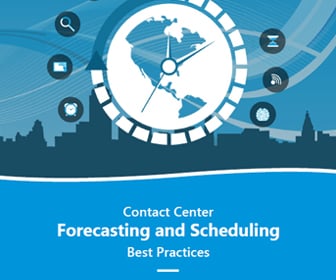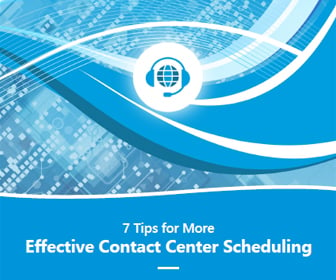Workforce Management Featured Article
The Healthcare Industry Succeeds Adopting the Best Practices of the Contact Center Industry
While few people may think of the call center as being on the forefront of cutting edge technology, when it comes to large-scale commercial or government communications, many technologies were actually developed for the contact center: the IVR, automated outbound calling, skills-based routing and even some speech technologies made all made their debut in the contact center. Over time, industries that didn’t operate traditional contact centers but still had a strong need to communicate with large numbers of people adopted many of these technologies.
Of particular note is the healthcare industry, which must facilitate communications between patients, providers, administrators, insurance companies, laboratories and more. According to Amanda Rhodes, writing for Medical Marketing & Media, the healthcare industry has benefitted from adopting technologies and best practices from the contact center.
“As healthcare has become more consumer-driven, the capabilities of call centers expanded,” wrote Rhodes. “For the most part, this involved one-size-fits-all messaging followed by marketing content provided through traditional communication channels, such as email or print.”
She noted that while these technologies were able to offer the advantage of being able to deliver consistent and controlled messages to the patient, they didn’t always allow for dynamic two-way communication, enabling providers to ask patient questions, capture the responses and then tailor the next message and action accordingly. As a result, the ability to create lasting behavioral changes was limited.
Once again, best practices from the contact center industry will help solve this problem by offering personalized, multichannel options to customers and helping providers and brands to perform more targeted outreach to patients with specific conditions that require customized treatments.
“This evolution of relationship marketing in healthcare is not just about pushing a brand message through a specific channel, but it's about creating greater engagement with targeted patients and opening the door for two-way conversations designed to create more personalized and targeted messaging to improve the patient experience and health outcome,” wrote Rhodes.
Patients today, just like customers, expect their service providers to know their previous interactions, to anticipate their needs and to provide tailored inbound service and useful, customized outbound communications, according to Rhodes.
“For example, using information captured during enrollment, relationship marketing programs could map out static support and communication tools for up to 12 months,” she wrote. “In contrast, integrating live phone outreach enables the program to evolve in real time through patient-identified needs and fosters personalized, dynamic support that can be integrated into the brand's broader marketing strategy.”
Customized inbound/outbound strategies can also be used to better ensure that patients are following their healthcare regimens and taking their medication. A call center approach can help reduce healthcare costs by doing simple tasks – blood pressure checks, or blood sugar monitoring – over the phone, in a live or even automated way. As the healthcare industry strives to improve the quality of care while keeping costs under control, there is a great deal the contact center industry has to teach it.
Edited by Stefania Viscusi







